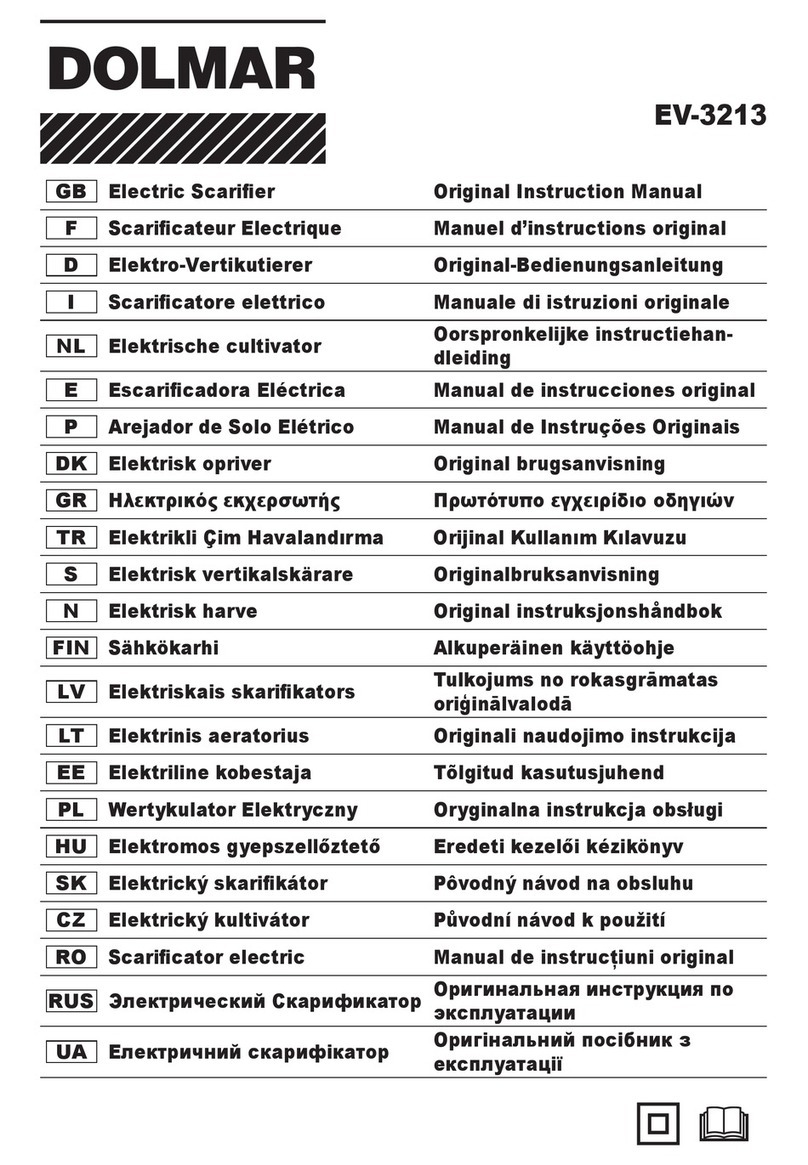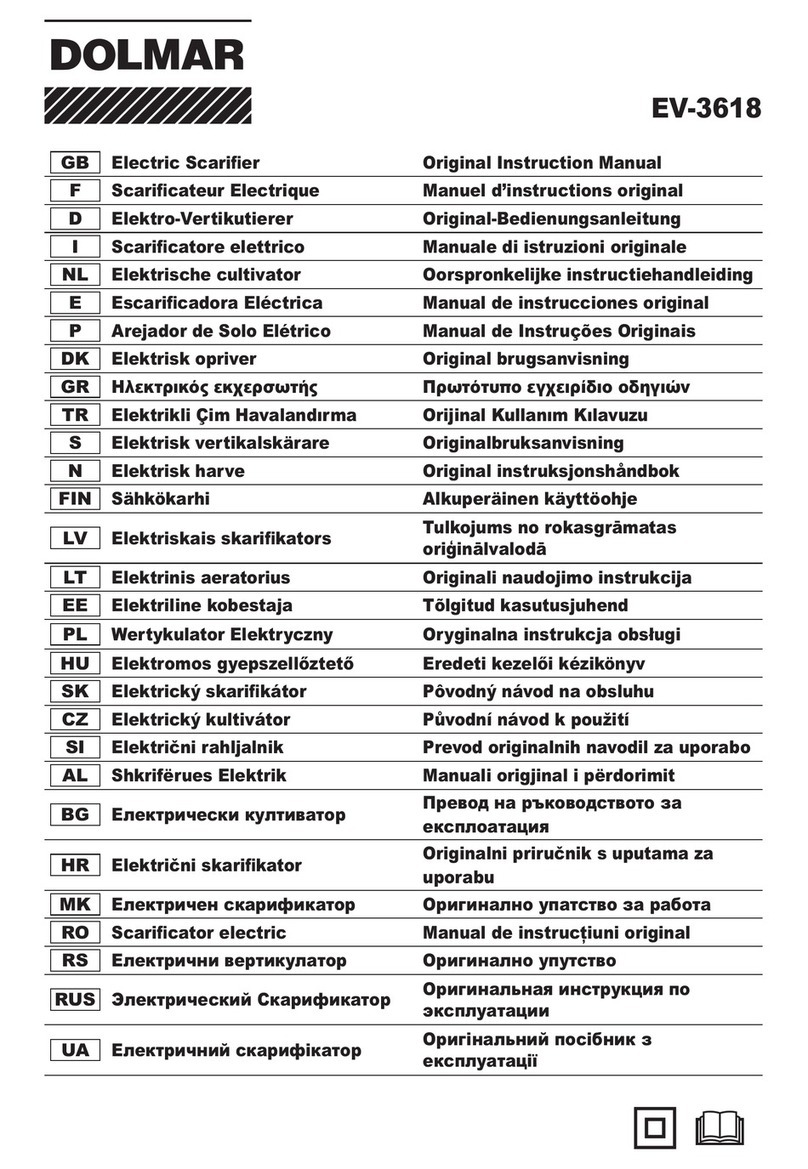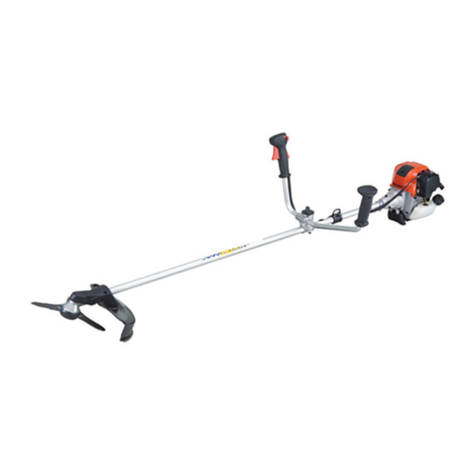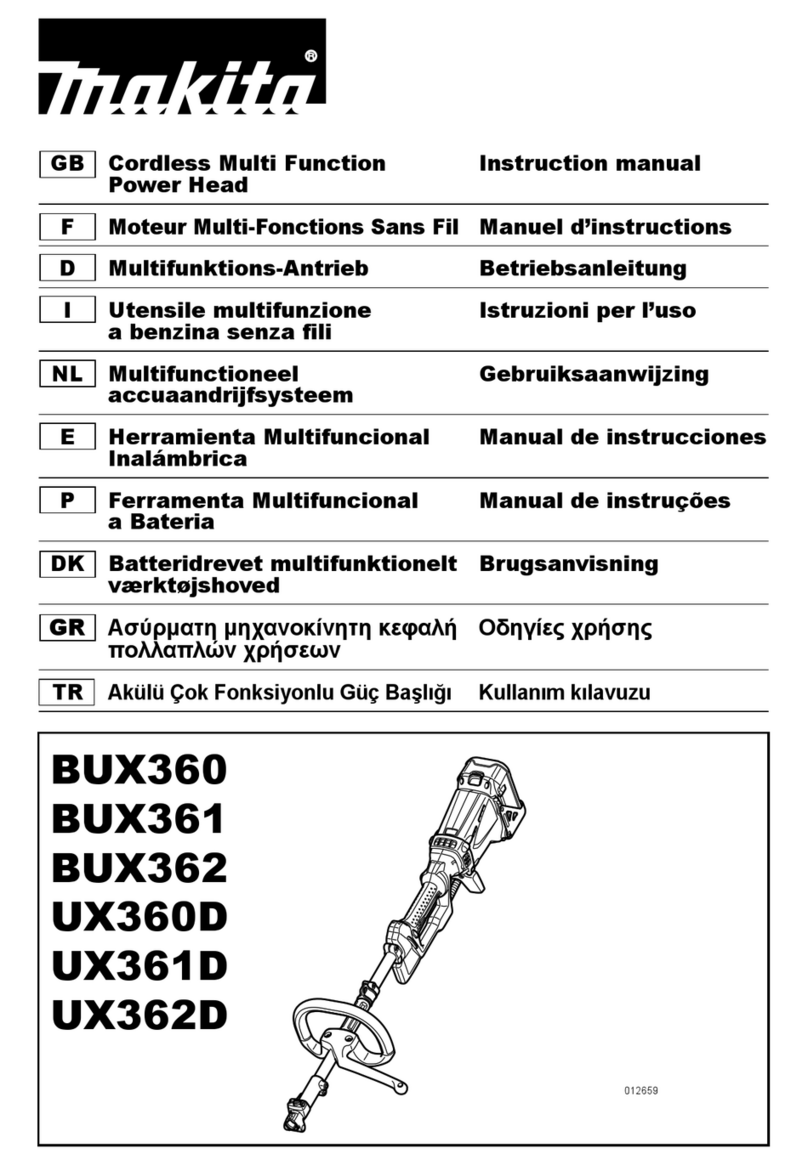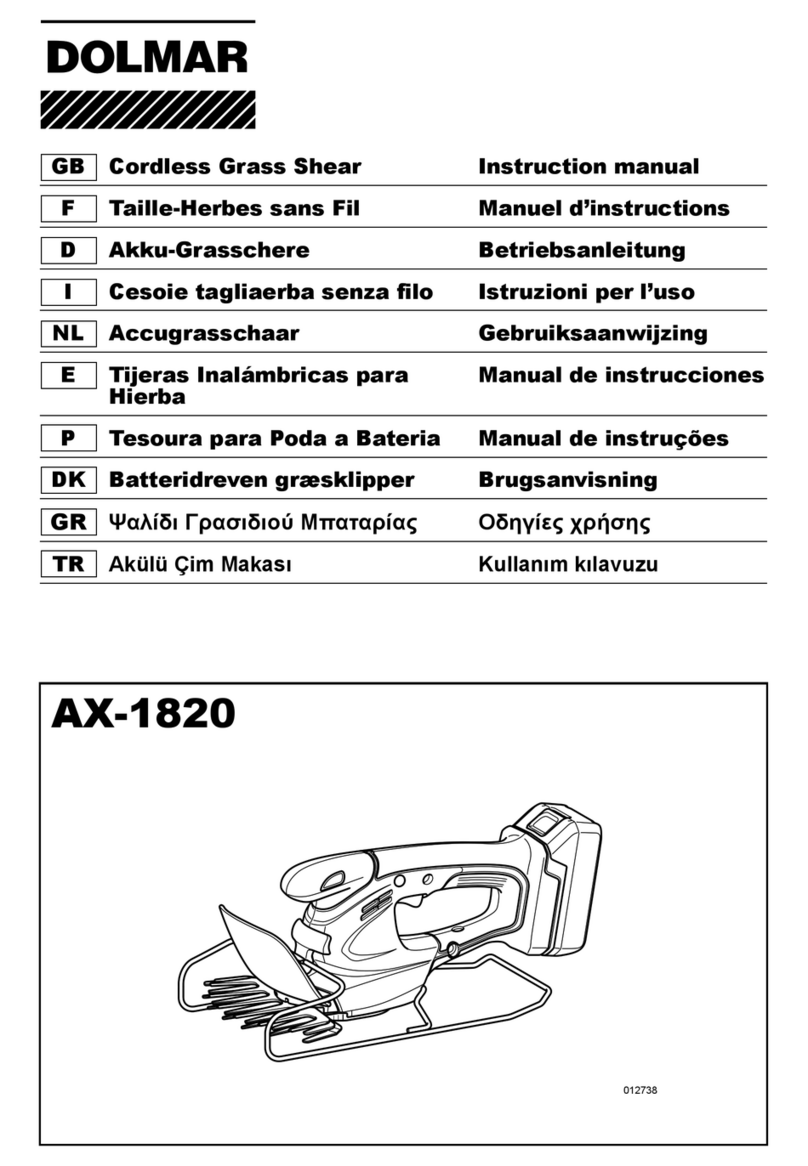
10
Save all warnings and
instructions for future reference.
CORDLESS GRASS SHEAR
SAFETY WARNINGS GEB070-2
WARNING! IMPORTANT READ CAREFULLY all
safety warnings and all instructions BEFORE USE.
Failure to follow the warnings and instructions may result
in electric shock, fire and/or serious injury.
Save all warnings and
instructions for future reference.
General instructions
1. To ensure correct operation, user has to read this
instruction manual to make himself familiar with the
handling of the equipment. Users insufficiently
informed will risk danger to themselves as well as
others due to improper handling.
2. Never allow people unfamiliar with these instructions,
people (including children) with reduced physical,
sensory or mental capabilities, or lack of experience
and knowledge to use the equipment. Local
regulations can restrict the age of the operator.
3. Use the equipment with the utmost care and attention.
4. Operate the equipment only if you are in good physical
condition. Perform all work calmly and carefully. Use
common sense and keep in mind that the operator or
user is responsible for accidents or hazards occurring
to other people or their property.
5. Never operate the machine while people, especially
children, or pets are nearby.
6. Never use the equipment after consumption of alcohol
or drugs, or if feeling tired or ill.
7. The motor is to be switched off immediately in case
that the equipment shows any problem or abnormal
sign.
8. Switch off and remove the battery cartridge when
resting and when leaving the equipment unattended,
and place it in a safe location to prevent danger to
others or damage to the equipment.
9. Don’t force the equipment. it will do the job better and
with less likelihood of a risk of injury at the rate for
which it was designed.
10. Don’t overreach. Keep proper footing and balance at
all times.
Personal protective equipment
1. Dress Properly. The clothing worn should be
functional and appropriate, i.e. it should be tight-fitting
but not cause hindrance. Do not wear either jewelry or
clothing which could become entangled. Wear
protective hair covering to contain long hair.
2. Wear eye protection and stout shoes at all times while
operating the machine.
Electrical and battery safety
1. Avoid dangerous environment. Don’t use the
equipment in damp or wet locations or expose it to
rain. Water entering an equipment will increase the
risk of electric shock.
2. Recharge only with the charger specified by the
manufacturer. A charger that is suitable for one type of
battery pack may create a risk of fire when used with
another battery pack.
3. Use power tools only with specifically designated
battery packs. Use of any other battery packs may
create a risk of injury and fire.
4. When battery pack is not in use, keep it away from
other metal objects, like paper clips, coins, keys, nails,
screws or other small metal objects, that can make a
connection from one terminal to another. Shorting the
battery terminals together may cause burns or a fire.
5. Under abusive conditions, liquid may be ejected from
the battery; avoid contact. If contact accidentally
occurs, flush with water. If liquid contacts eyes,
additionally seek medical help. Liquid ejected from the
battery may cause irritation or burns.
6. Do not dispose of the battery(ies) in a fire. The cell
may explode. Check with local codes for possible
special disposal instructions.
7. Do not open or mutilate the battery(ies). Released
electrolyte is corrosive and may cause damage to the
eyes or skin. It may be toxic if swallowed.
Starting up the equipment
1. Make sure that there are no children or other people
nearby, also pay attention to any animals in the
working vicinity. Otherwise stop using the equipment.
2. Before use always check that the equipment is safe
for operation. Check the security of the cutting tool
and the guard and the switch trigger/lever for easy and
proper action. Check for clean and dry handles and
test the function of the start/stop.
3. Check damaged parts before further use of the
equipment. A guard or other part that is damaged
should be carefully checked to determine that it will
operate properly and perform its intended function.
Check for alignment of moving parts, binding of
moving parts, breakage of parts, mounting, and any
other condition that may affect its operation. A guard
or other part that is damaged should be properly
repaired or replaced by our authorized service center
unless indicated elsewhere in this manual.
4. Switch on the motor only when the hands and feet are
away from the cutting tool.
5. Before starting make sure that the cutting tool has no
contact with any objects.
Method of operation
1. Only use the equipment in good light and visibility.
During the winter season beware of slippery or wet
areas, ice and snow (risk of slipping). Always ensure a
safe footing.
2. Take care against injury to feet and hands from the
cutting tool.
3. Never stand on a ladder and run the equipment.
4. Never climb up into trees to perform cutting operation
with the equipment.
5. Never work on unstable surfaces.
6. Remove sand, stones, nails etc. found within the
working range. Foreign particles may damage the
cutting tool and can cause dangerous kick-backs.
7. Should the cutting tool hit stones or other hard objects,
immediately switch off the motor and inspect the
cutting tool.
